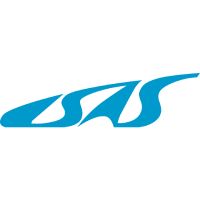/
Akari, SSSat 1 & CUTE 1.7
Launch Success
Liftoff Time (GMT)
21:28:00
Tuesday February 21, 2006
Mission Details
Read Article
Akari
ASTRO-F, also called Akari, originally named IRIS (InfraRed Imaging Surveyor), is a 70 cm cooled telescope. It has a much more powerful capability for survey work than the IRAS, owing to the advanced technologies now available.
Low Earth Orbit
1 Payload
955 kilograms
SSSat 1
The SSSat (Solarsail Subpayload Satellite, soraseiru sabupeiro-do) was an experimental 15-meter diameter solar sail, based on the experience of the earlier S-310-34 suborbital mission. The solar sail experiment was mounted on the third stage of the M-5 launch vehicle instead of ballast and was to deploy after the primary and piggyback satellites were jettisoned. It was launched in February 2007 and was deployed from the stage at 2146 UTC but opened only incompletely.
Low Earth Orbit
1 Payload
CUTE 1.7
CUTE-1.7 (Cubical TITech Engineering Satellite) is a follow-on CubeSat project to CUTE-1 (launch 30 June 2003 and operational as of 2005) developed mainly by students of LSS (Laboratory for Space Systems) at the Tokyo Institute of Technology, Tokyo, Japan. The double-cube satellite configuration conforms to the CubeSat standard in size (10 cm × 10 cm × 20 cm). The spacecraft design makes use of the so-called "SatelliteCore" concept, containing a functionally integrated bus system (for reuse on other systems). The SatelliteCore provides electrical power (3.3 V, 5 V, and unregulated) and USB (Universal Serial Bus) connection functions. This new SatelliteCore container is based on the CubeSat standard. The new SatelliteCore concept is intended to optimize the cost and time of repetitive chores. However, the combination of the SatelliteCore container plus a mission/instrument container requires at least a double cube implementation for a mission. The satellite was successfully deployed in orbit, but no signals were received.
Low Earth Orbit
1 Payload
2 kilograms
Launch Site
Stats
Mu-V
6th
Mission
1st
Mission of 2006
Institute of Space and Aeronautical Science
29th
Mission
1st
Mission of 2006
2006
5th
Orbital launch attempt

